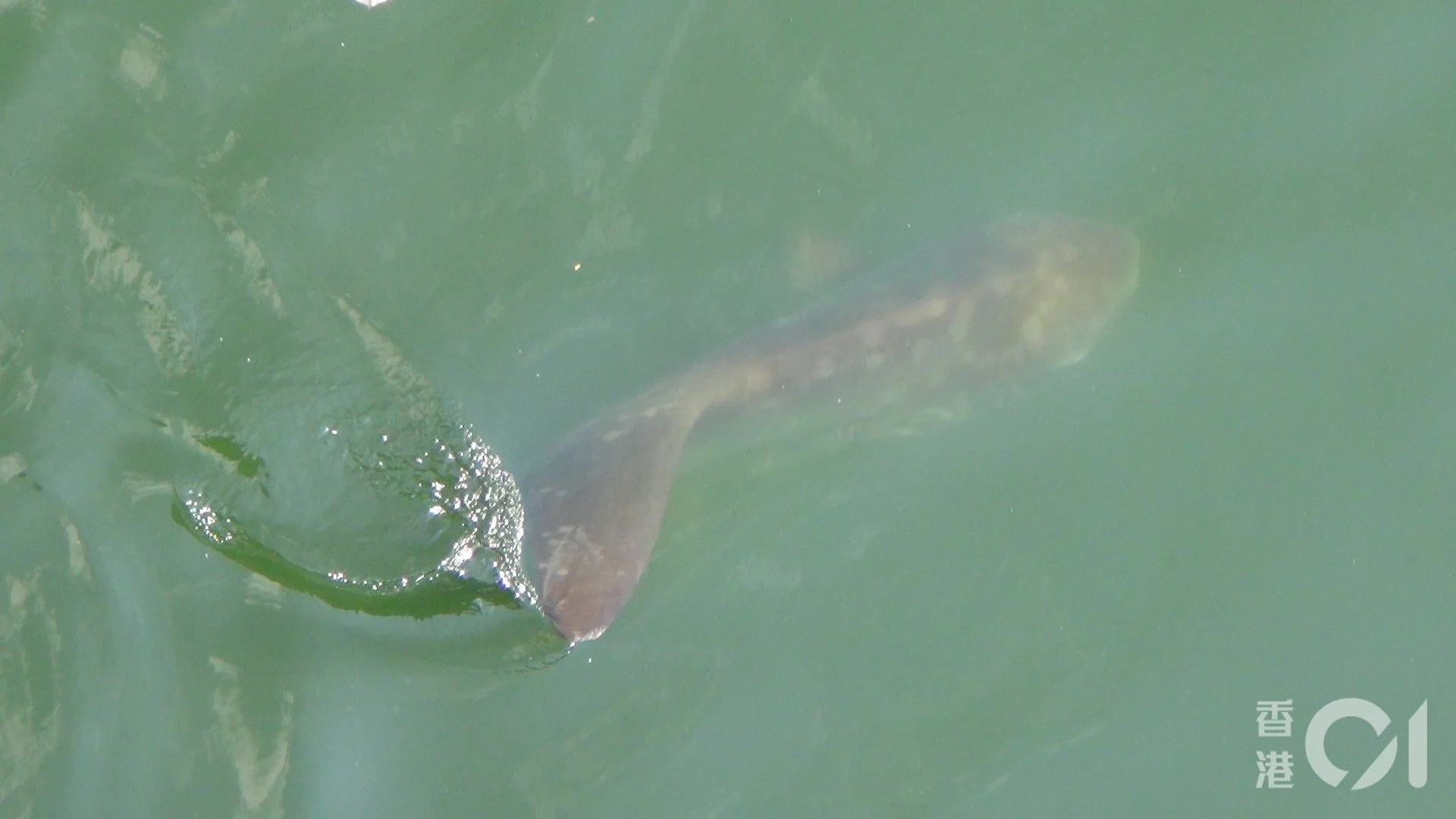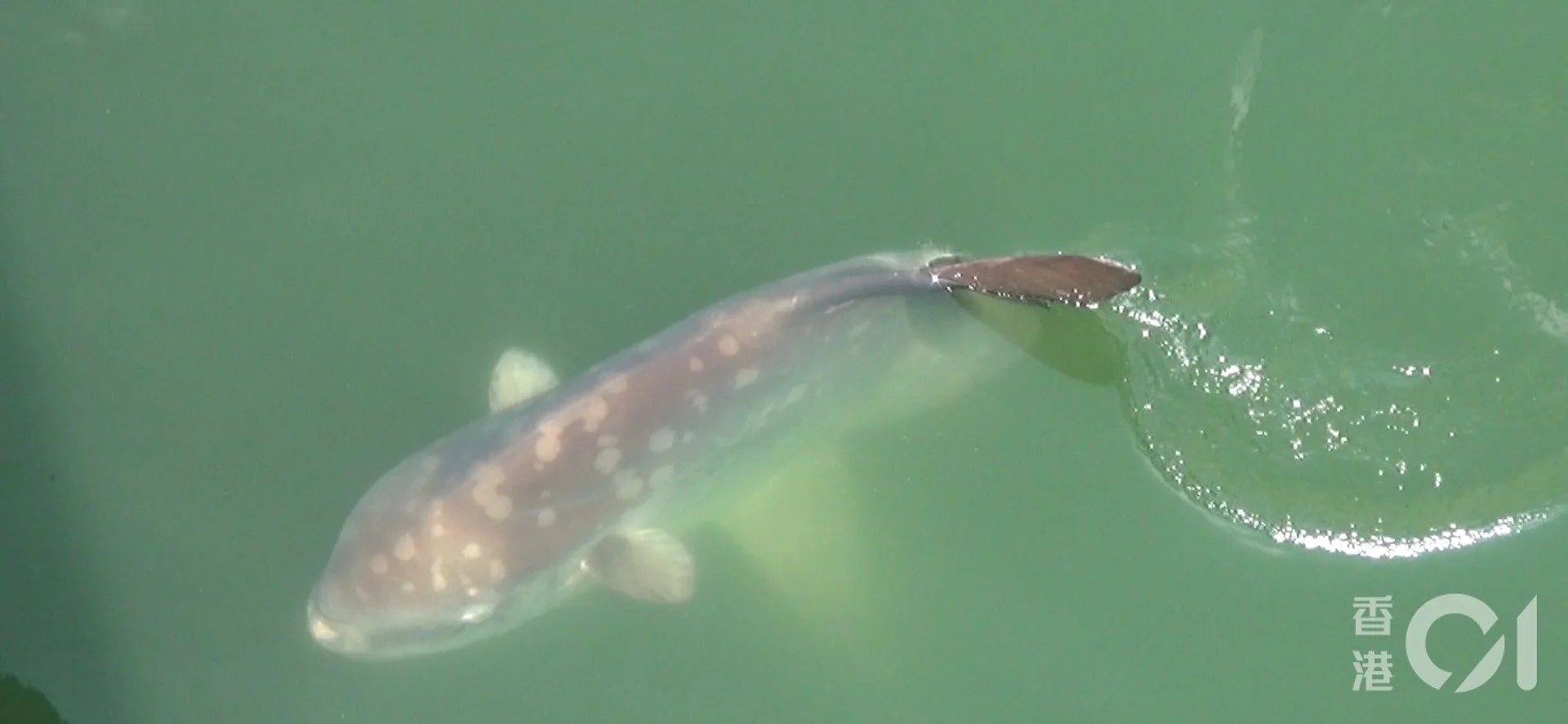Rare sunfish spotted in Hong Kong's shallow waters.
On 25 April 2022, Hong Kong locals saw a large 2.5 metre fish swimming with its dorsal fin exposed in the Tuen Mun River, with discussions among locals leading to speculation that they had seen a shark. However upon further analysis, it turned out to be a large sunfish or “mola mola”.
Andy Cornish, Chief Planner of the Global Shark Project of the WWF Hong Kong commented that at first glance, he too thought it was a shark, but upon a closer look, identified it to be a sunfish. Sunfish are one of the world’s largest bony fish, with its body capable of reaching up to 3 metres in length. Sunfish are more accustomed to deep sea waters and are extremely rare to venture into shallow waters of Hong Kong. Many fisherman who had gathered around the Tuen Mun River exclaimed that they had never ever seen a live sunfish in Hong Kong waters in several decades.
Cornish further commented that he had been diving in Hong Kong waters since 1996 and had never seen a sunfish. He had only seen a sunfish carcass once in Aberdeen, but no other sightings since then.
Andrea Richey, education director of the Hong Kong Shark Conservation Society, said that the overfishing of sharks is serious, and sharks play an important role in maintaining ecology. The public can contribute to shark conservation by changing their living habits, such as not eating shark fins.
It is not the first time that a sunfish has been mistaken for a shark. A sunfish has appeared on the coast of Wareham, Massachusetts, and local citizens have called the police to worry that it is a shark. The authorities dispatched officers to investigate and found that the sunfish was just swimming, but citizens often called 911 when they saw the sunfish, forcing the authorities to call on everyone to stop calling the police.
Sunfish Facts
The Mola mola—which looks like a prehistoric shark that lost a tail in an epic battle—might be the world's weirdest fish. Here are just a few reasons it's the most fascinating marine creature around.
1. They love to sunbathe.
Sunfish spend up to half the day basking in the sun near the surface of the water, which helps warm their bodies up after deep water dives to hunt.
2. They can weigh more than a car.
The average ocean sunfish is 10 feet long and weighs 2200 pounds, but the biggest can grow up to 5000 pounds. The average pickup truck is only 4000. This makes them the world's largest bony fish.
3. They lay more eggs than any other animal.
Sunfish can lay up to 300,000,000 eggs at one time, more than any other vertebrate.
4. They have super weird teeth.
Mola mola teeth are fused together in two plates that look like a parrot’s beak.
5. They are related to the bass.
Largemouth bass, smallmouth bass, rock bass, and black bass are all members of the sunfish family. Bass generally eat the smaller members of the sunfish family, like bluegills.
6. Eating them is bad luck, according to Polynesian legend.
According to marine biologist Tierney Thys’ site OceanSunfish.org, Polynesians called the sunfish “King of Mackerel.” It was considered bad luck to kill sunfish, lest their loss prevent mackerel from making their way to the islands.
7. They’re named after a millstone.
The name Mola mola comes from the Latin word for “millstone.” It’s named for its gray, round body, and rough texture.
8. In German, they are called "swimming heads."
The German term for a sunfish is Schwimmender Kopf, meaning “swimming head,” a pretty apt description of their appearance. The Polish name for sunfish is samogłów, or “head alone.”
9. They are the namesake of the world’s most popular sailboat.
The Sunfish, first developed in the late 1950s, was designed to be something like a surfboard with a sail on it. In 1995, it was inducted into the the American Sailboat Hall of Fame as the most popular fiberglass boat ever sold.
10. They can dive up to 2600 feet.
Sunfish generally hang out at depths of 160 to 650 feet, but they can dive much deeper on occasion. In one study, scientists recorded a sunfish diving more than 2600 feet below the surface.
11. They’re voracious predators.
Scientists used to think that sunfish were relatively inactive, spending their days sunbathing and feeding on jellyfish. However, despite their doofy appearance, sunfish are active predators with discerning tastes who travel several miles per day. In a recent study, scientists observed sunfish feeding solely on the most energy-rich parts of jellyfish—the gonads and the arms (yum!)—while leaving the less nutritious bell behind. They also occasionally eat small fish and zooplankton.
12. They were an acceptable form of tax payment in 17th century Japan …
During the 1600s and 1700s, Japanese shoguns accepted Mola mola as payment for taxes.
13. … And are currently the subject of a popular Japanese video game.
A mobile game called Survive! Mola Mola! has more than 6 million downloads in Japan. It revolves around nurturing an ocean sunfish, like Tamagotchi for weird-shaped marine life.
14. They may or may not be plankton.
Despite its massive size, the sunfish has been classified for years as a type of plankton, because it seemed to drift with the current rather than swim. (Plankton drift up and down the water column with the current, unable to swim against it.) However, more recent studies of Mola mola have refuted the idea that sunfish are passive planktonic creatures. Tracking has shown that they can move independently of the current, and can swim at speeds similar to that of other large fish.
Main Source: HK01, MentalFloss







